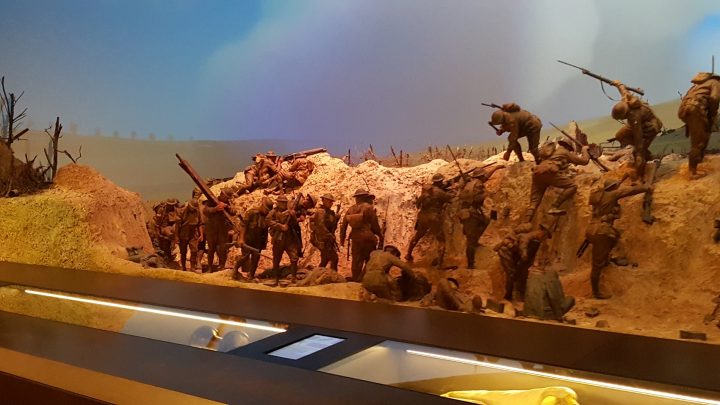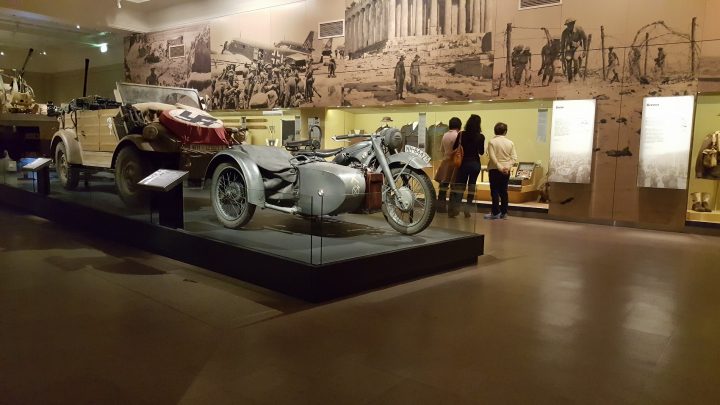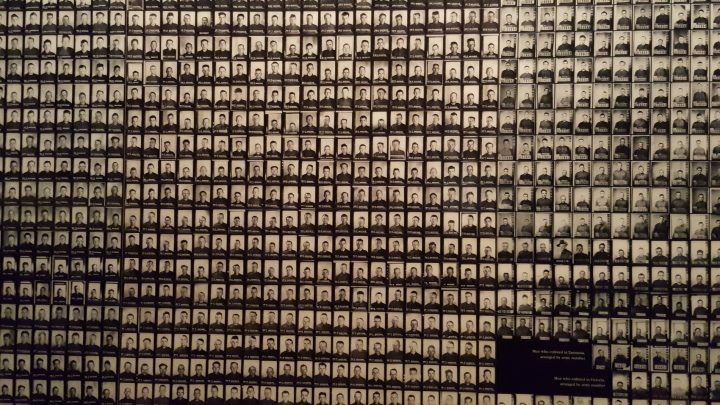
This is the third in a series of articles by Gillian Johnston as she travels with AAT Kings.The first article was The Puffing Billy Train and the second article was A farm of a different kind at Kangaroo Island pairs nicely with the local wine.
We had the opportunity to have a quick look through the Australian War Memorial at Canberra and were amazed by the record of history and service of soldiers that stood in front of us.
This Memorial, which opened in 1941 and was founded by Charles Bean, is an exceptional tribute to those that have served Australia. One could have spent a number of days just absorbing what was displayed on the floor. The place was crowded with school children groups and tourists, all coming to remember those who went before us, in service of our country.

The Australian War Memorial is focused on those that fought and died, in the armed forces and supporting organisations for Australia. It is a world-class museum and has an extensive archive attached.
Volunteers offer a guided tour every 30 minutes and go through all the galleries, or at certain times through World War I or World War II galleries. You will pass through the different rooms with items on stands, hanging from the ceiling, and even covering the walls in posters.

The most spectacular display is that of the aircraft that hang from the ceiling in the back room and some elsewhere. The aircraft display in particular has been in the Memorial since the beginning and includes such planes as a Kittyhawk, Mustang, Wirraway and Mig 15.

There are displays covering all of Australia’s involvement in war, from the country’s first settlement at Sydney Cove to the peacekeeping roles under the United Nations auspices.
There is also a section dedicated the Australia’s indigenous soldiers and their participation in many wars.
One of the many highlights of this tour were the activities bringing people together in Storytime or theatre performances from Women in War Museum.
There are newsletters, country talks, demonstrations, and you can even track the family history of relatives who served in any wars in which Australia had involvement in since 1960. If you need assistance with your research you can go to the research centre.
There was so much to see and do and as we wandered through the rooms we were moved by some of the enormous number of soldiers who had passed in service of their country. In particular there were photos on one wall of 1,787 prisoners of war who died in North Borneo, all brave Australian soldiers.

As the Memorial started to close the staff came to move people forward toward the door. There was a farewell service to be held outside around the Pool of Reflection and this encouraged people to move quickly to obtain a spot to view the service.
The school children were filed in beside the pool and many people were left standing at the far end of the area. First the Australian national anthem was played by a piper, followed by the poignant strains of a Lament and the story behind one of the names on the Roll of Honour. In turn, visitors were invited to lay wreaths and floral tributes to those who had fought in the different wars.
The last post clearly stopped all noises and movement when it pierced the air and finished the day, farewelling us from the Australian War Memorial.

Having spent a lot of time trying to see the history associated with our family’s involvement in wartime activities, boarding our AAT Kings bus we felt we could have spent a number of days examining the history of our soldiers — there was just far too many galleries to be covered and so little time.
The work put into making such a beautiful memorial was exceptional.